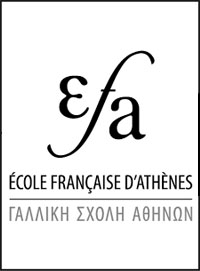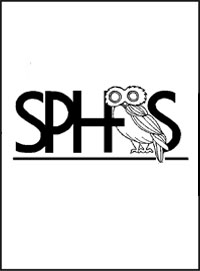Toumba Serron - 2022
Informations Générales
Numéro de la notice
18597
Année de l'opération
2022
Chronologie
Mots-clés
Nature de l'opération
Institution(s)
British School at Athens (BSA) (École britannique à Athènes)
Εφορεία Αρχαιοτήτων Σερρών (Éphorie des antiquités de Serrès)
Localisation
Toponyme
Serrès, Serrai
Serrès, Serrai
Notices et opérations liées
Description
Dimitra Malamidou (Ephorate of Antiquities of Serres), Nicolas Zorzin (National Cheng Kung University-Taiwan) and James Taylor (York) report on the first excavation season conducted in Toumba Serron, as part of a five-year collaborative research programme between the Ephorate of Antiquities of Serres and the BSA.
With the support of magnetometry operations done in 2021 it was possible to evaluate the limits of the site and the settlement’s organisation, but, despite some good results during the walking survey (pointing us towards the Late Neolithic period) both dating and phasing of the occupations of the site needed to be confirmed through more invasive technics: drilling and excavations (Fig. 1). This excavation provided the first archaeological results for the site of Toumba Serron.
Results from the drilling process have shown a less extensive period of occupation that was expected, with a maximum anthropic accumulation of 3m in depth across the site. Even though, there is a suspicion later layers have been scrapped away by the intensive agriculture activities of the last decades, the results of the auger process exclude a multitemporal use of the site by human groups. It was also possible to confirm that the site has an occupation in situ around 160 cm to 200 cm in depth, which might correspond to the Late Neolithic (LN) I period. Yet, the presence of an abundant material dated from the Late Neolithic II period, but without clear remains of occupation in place yet, might indicate that the LNII occupations’ layers have been heavily disturbed (and possibly later periods). It should be noted that some sherds present on site were identified as “Post-Byzantine” / Ottoman period (1422 AD-1913 AD).
The archaeological material excavated belongs to the Late Neolithic period (Fig. 2), which is particularly clear with the pottery decoration and with the presence of artefacts made of spondylus and marble. Other notable finds are the remains of the shape of a linear feature (slightly circular), corresponding to the expected magnetometry signal, and located at 100cm in depth. This feature composed of a (possibly built) clay structure (C-204) and a cut (C-206), formed a clear 2m long linear feature (Fig. 5), slightly curving to the west, as a fragment of the potential circular enclosure of 120m diameter (Fig. 6), on the South-West corner of the G5_83 trench. In trench H6_65 was dug to test the results of the magnetometry survey which indicated the presence of a long building made of burned clay building material, and oriented South-West/North-East. In accordance with the sample drill results, a first layer (≈40cm) of extremely disturbed and diluted clay building material was defined around 80 down to 120cm in depth. A second archaeological layer immediately bellow, notably with what seems to be a stones assemblage. A 3m x 2m test (C-109 – 90cm thick) was opened in the South-West corner of the trench down to 165cm in depth, in an attempt to explore deeper layers. It contained essentially pottery sherds dating from the LNII, and only few from the LNI, which illustrates that the transition between the two periods were not detected stratigraphically during the excavation but should be located between 140 to 160cm. Finally, a high concentration of pottery dating from the LNII phase in the Trench H3_82 suggests a dump/pit of pottery rejection, mostly from the LNII.
With the support of magnetometry operations done in 2021 it was possible to evaluate the limits of the site and the settlement’s organisation, but, despite some good results during the walking survey (pointing us towards the Late Neolithic period) both dating and phasing of the occupations of the site needed to be confirmed through more invasive technics: drilling and excavations (Fig. 1). This excavation provided the first archaeological results for the site of Toumba Serron.
Results from the drilling process have shown a less extensive period of occupation that was expected, with a maximum anthropic accumulation of 3m in depth across the site. Even though, there is a suspicion later layers have been scrapped away by the intensive agriculture activities of the last decades, the results of the auger process exclude a multitemporal use of the site by human groups. It was also possible to confirm that the site has an occupation in situ around 160 cm to 200 cm in depth, which might correspond to the Late Neolithic (LN) I period. Yet, the presence of an abundant material dated from the Late Neolithic II period, but without clear remains of occupation in place yet, might indicate that the LNII occupations’ layers have been heavily disturbed (and possibly later periods). It should be noted that some sherds present on site were identified as “Post-Byzantine” / Ottoman period (1422 AD-1913 AD).
The archaeological material excavated belongs to the Late Neolithic period (Fig. 2), which is particularly clear with the pottery decoration and with the presence of artefacts made of spondylus and marble. Other notable finds are the remains of the shape of a linear feature (slightly circular), corresponding to the expected magnetometry signal, and located at 100cm in depth. This feature composed of a (possibly built) clay structure (C-204) and a cut (C-206), formed a clear 2m long linear feature (Fig. 5), slightly curving to the west, as a fragment of the potential circular enclosure of 120m diameter (Fig. 6), on the South-West corner of the G5_83 trench. In trench H6_65 was dug to test the results of the magnetometry survey which indicated the presence of a long building made of burned clay building material, and oriented South-West/North-East. In accordance with the sample drill results, a first layer (≈40cm) of extremely disturbed and diluted clay building material was defined around 80 down to 120cm in depth. A second archaeological layer immediately bellow, notably with what seems to be a stones assemblage. A 3m x 2m test (C-109 – 90cm thick) was opened in the South-West corner of the trench down to 165cm in depth, in an attempt to explore deeper layers. It contained essentially pottery sherds dating from the LNII, and only few from the LNI, which illustrates that the transition between the two periods were not detected stratigraphically during the excavation but should be located between 140 to 160cm. Finally, a high concentration of pottery dating from the LNII phase in the Trench H3_82 suggests a dump/pit of pottery rejection, mostly from the LNII.
Auteur de la notice
Georgios Mouratidis
Références bibliographiques
Unpublished field report.
Légende graphique :
![]() localisation de la fouille/de l'opération
localisation de la fouille/de l'opération
![]() localisation du toponyme
localisation du toponyme
![]() polygone du toponyme Chronique
polygone du toponyme Chronique
Fonctionnalités de la carte :
![]() sélectionner un autre fond de plan
sélectionner un autre fond de plan
![]() se rapprocher ou s'éloigner de la zone
se rapprocher ou s'éloigner de la zone
![]() afficher la carte en plein écran
afficher la carte en plein écran
Date de création
2023-08-08 13:04:11
Dernière modification
2024-08-05 06:41:56
Figure(s)










